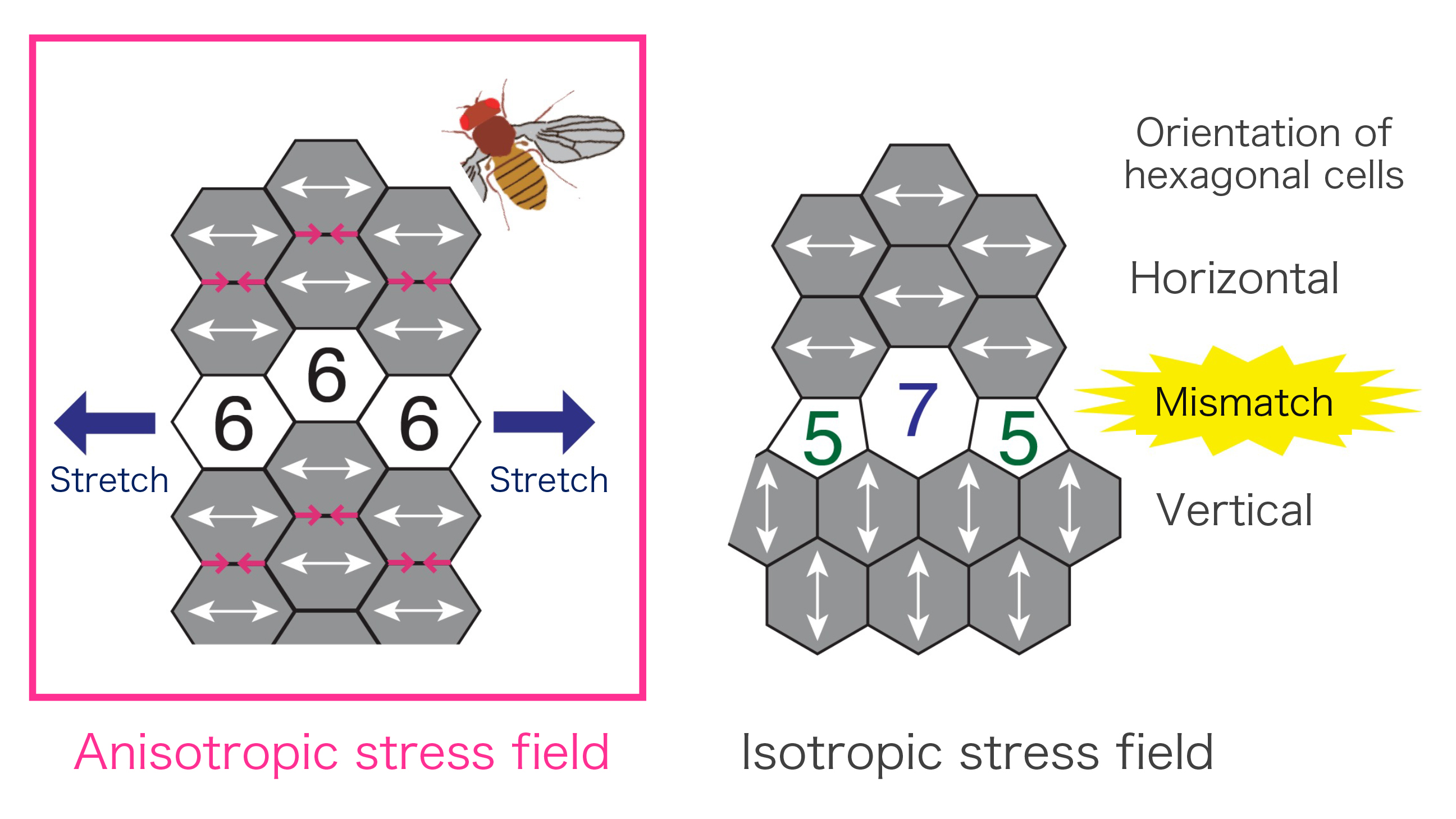DATE2021.07.12 #FEATURES#The Rigakubu News
Mysteries in Science: Life and KonMari
Kaoru Sugimura
(Associate Professor, Department of Biological Sciences)
Our bodies contain around the same number of proteins as Avogadro's number (~1023), DNA about as long as the diameter of the solar system (~1010 km), and tens of trillions of cells (~1013). It’s a dizzying amount of numbers but these components need to be exquisitely arranged in order for us to survive. The nucleus of a human cell is approximately 10 µm (10-5 m) in diameter and contains DNA that is as long as the height of a human being (2 m). Here, DNA is uncoiled and folded in regions where its transcription into mRNA will be activated and silenced, respectively. In the mitotic phase of the cell cycle, organelles, such as mitochondria and endoplasmic reticulum, fragment into vesicles, which are then reassembled to form a network of organelles. Through this seemingly irrational process, organelles are evenly distributed to daughter cells. Even from a larger scale, during the development of an organism from an egg, differentiated cells are precisely arranged in tissues. For example, the position of wing veins in Drosophila is determined within the accuracy of a single cell width. There are people around me who don’t tidy up, but the individual cells that make up those untidy people are such masters of organization and tidying that they would put KonMari1 to shame.
However, organizing and tidying in organisms is vastly different from that of the home or workplace. Cells and tissues do not have KonMari to show them where to store things, prepare an exquisitely sized small box for them, and teach them folding techniques. Furthermore, the clothes (the building blocks of life) in the closet are constantly changing and storage methods need to flexibly change in response to nutritional status, mechanical stimuli, and so on. Organizing and tidying in organisms is a process of adaptively forming order without a designer.
So how do organisms spontaneously and adaptively organize and tidy up? Recent advances in imaging technology and theoretical modeling have made it possible to quantitatively analyze how cells and tissues organize and tidy up. As a result, we have learned that physical phenomena in non-biological (nonliving) material, such as colloids and foams, and granular materials, play an important role in the organizing and tidying that occurs within living organisms. For example, it has been reported that liquid-liquid phase separation2 accelerates the formation of organelles without membranes and heterochromatin (a chromosomal region that is compactly folded and transcription is suppressed) and that shearing of epithelial tissue promotes relaxation to the hexagonal cell pattern (Figure 1).
Our understanding of the organizing mechanisms in organisms is becoming clearer; however, many mysteries still remain. Organisms change their storage pattern by consuming energy and using information, but we have yet to understand the physics and information theory of this non-equilibrium phenomenon. Furthermore, how these organizing techniques evolved in organisms is also largely unknown. As the functional significance of phase separation and cell arrangement hasn’t been necessarily thoroughly investigated, it’s likely that clarifying the relation between structure and function may provide a clue.
I hope that the day when we discover what exactly “sparks joy” in life is not that far away.
 Figure 1: The physical mechanism of hexagonal cell packing in the epithelial tissue of Drosophila, an example of organizing and tidying in organisms. In the isotropic stress field, there is a mismatch in the orientation of hexagonal arrays. (Right) Geometric constraints cause mismatched areas to be filled with nonhexagonal cells. (Left) On the other hand, in the wing epithelium where shear stress is present, cells orient to balance the force, which suppresses mismatches and facilitates relaxation to the hexagonal cell pattern (Sugimura and Ishihara, Development, 2013).
Figure 1: The physical mechanism of hexagonal cell packing in the epithelial tissue of Drosophila, an example of organizing and tidying in organisms. In the isotropic stress field, there is a mismatch in the orientation of hexagonal arrays. (Right) Geometric constraints cause mismatched areas to be filled with nonhexagonal cells. (Left) On the other hand, in the wing epithelium where shear stress is present, cells orient to balance the force, which suppresses mismatches and facilitates relaxation to the hexagonal cell pattern (Sugimura and Ishihara, Development, 2013).
1 Marie Kondo is an organizing consultant who authored The Life-Changing Magic of Tidying Up: The Japanese Art of Decluttering and Organizing (2014). One feature of the KonMari method consists of getting rid of things based on what “sparks joy”.
2 A physical phenomenon in which a mixed state separates into multiple phases. One example of this are oil droplets that float in ramen broth.
― This article is from the "Mysteries in Science" series in The Rigakubu News ―
Translated by Kristina Awatsu, Office of Communication


